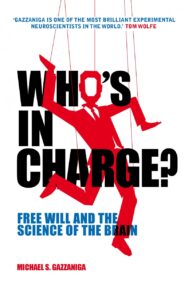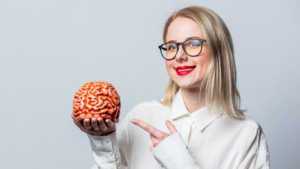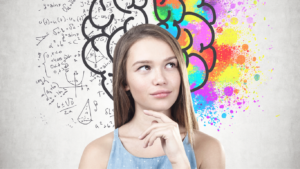Table of Contents
Introduction
Science …If you have ever seen a crime drama like Law & Order: Special Victims Unit, you may have caught yourself aghast and wondering how humans can do such horrible things to one another.
Everyone possesses free will, which means that we may decide what to do – and what not to do! Given that everyone has a choice, why would anyone torture, rape, or mistreat another human being?
In contrast, if you work in an office where everyone has a distinct personality and style of leadership, you may frequently wonder how anyone gets along.
Given that we are all so unique and have a limitless capacity to grate on one other’s nerves, it’s astonishing that anyone has the self-control to refrain from yelling at their coworkers!

All of these are topics of enormous scope, and it would be impossible to address them in a single book. However, the author notes that the simplest solution rests inside the human conscience.
Without the conscience, we would lack the essential self-control to prevent causing harm to others. Without conscience, society and civilization would not exist.
And despite the fact that we cannot fully address the complexity that govern the human moral compass, biology and psychology can assist us understand it. In this summary, we will investigate the author’s study on this fascinating topic.

Chapter 1
How Does The Brain Function?
Every day, your brain conduct a multitude of hidden functions that preserve you efficient and human. In reality, we use our ability to think intelligently, rationally, or morally as evidence of our superiority over animals and other life forms.
Consider Rene Descartes’ claim from the seventeenth century: “Cogito, ergo sum – I think, therefore I am.”
(Or, if you like, you may consider the smash single by Billie Eilish with the same title!) But have you ever questioned how your brain operates?
Have you ever wondered, “What makes a person tick?” If you haven’t already, fasten your seatbelts, because we’re going to undergo a crash course in fundamental neurology!
Initially, it is essential to demonstrate that the brain is composed of numerous distinct components, each of which performs a unique and essential function.
You can consider your brain to be organized into various departments, similar to a firm. In the case of the brain, it is primarily split into the “left brain,” “right brain,” and the brain stem.
And much like any firm, the “office” of your brain can only operate at peak efficiency if all employees are present and performing their duties.
What do these various departments do? For the sake of this chapter, we will focus on the role of the left brain, and we will travel back in time to study how neuropsychological discoveries have shaped our present knowledge of the left brain’s function.
In the 1960s, neuropsychologist Roger Sperry conducted a series of radical, experimental operations on epileptic patients. With the intention of addressing their seizures, he severed the corpus callosum of their brains.
If, like me, you’re not immediately familiar with this area of your anatomy, the corpus callosum is a dense bundle of nerves and fibers that connects the right and left sides of your brain and enables communication between them.
Sperry’s method was successful because it achieved its intended aim; the severity of the patients’ seizures was drastically decreased. Scientists were presented with a focus group of persons whose right and left brains were no longer communicating, which was an unanticipated bonus.
As they sought to comprehend what would occur when transmission in the brain was disrupted, researchers discovered that studies conducted on “split-brain” patients allowed them to separate and identify the diverse roles of each part of the human brain.
In addition, they determined that a thorough comprehension of these various aspects and their purposes is essential for creating a sense of self.
All sensory information from the left side of our body is processed by the right side of our brain, and vice versa. This is one of the most important discoveries made by their research.
So, what is our left brain’s function? It becomes out that its principal purpose is to interpret. But what makes it more intriguing is that its perceptions are frequently outlandish! (Without pun intended)
The participant’s left brain (and right eye) were presented a picture of a chicken’s foot during one of the most renowned split-brain experiments ever conducted.
The investigator next displayed a snowy environment to the patient’s right brain (their left eye). The patient was then instructed to see a series of additional random photos with both eyes and select the images that matched the initial pair.
The patient’s right hand, the one controlled by their left brain, properly chose a chicken image to match the chicken foot. Similarly, the patient’s left brain recognized a snow shovel image and linked it to the snowscape.
However, when asked to explain their decisions, investigators were able to observe the genuine disconnect between the left and right hemispheres.
Rather than stating, “That’s funny, I can’t seem to interact with my right brain, and I have no clue why I chose that visual with my left hand,” their left brain attempted to create a reasonable explanation.
In an attempt to make sense of the photos and their subsequent identifications, patients provided responses such as, “Well, the chicken foot belongs with the chicken, and I picked the shovel since you need it to clean the chicken coop.”
Consequently, as this example demonstrates, our left brain is an interpreter; its purpose is to create reasonable explanations for the things that occur to us, even if those explanations are utterly incorrect.
Chapter 2
Our Brains Tell Stories To Help Us Understand The World
Thus, we already know that the left hemisphere of the brain is responsible for interpreting visuals and explanations. However, did you realize that our brains also give us stories to help us comprehend the world and the problems we face on a daily basis?
You probably don’t wander around telling yourself “Once upon a time…”
stories every day, so this may sound a bit absurd. But “once upon a time” is not the conventional formula for all stories! And if you doubt that you tell yourself stories, consider your mental process when you imagine just what would occur next at any point in the day.
For instance, suppose you are going to enter a session with your supervisor. You are late in submitting the requested report. As a result, your approach to her office may be tinged with apprehension, and you may find yourself envisioning the conclusion.
You wonder whether she will fire you. You wonder whether she will be angry. Perhaps you are envisioning what she will say when you enter the room. Or perhaps you are imagining what you will say in your defense.
Perhaps she will be cool with it. Or, it may be devastating. Almost certainly, you have envisioned outcomes for every conceivable circumstance. Whether you realize it or not, these ideas are actually stories you make yourself to forecast the day’s result or to offer certainty or comfort.
And the same holds true for stories that do not involve us personally. If you’re like the majority of people, you have childhood recollections of ghost stories, Bible tales, nursery rhymes, and fables that your parents had told you.
Among the classics are The Tortoise and the Hare, the narrative of David and Goliath, and the account of Adam and Eve. These tales are intended to aid us in navigating the world since they shape our perception of human existence’s overarching themes.
For instance, the ancient fable The Tortoise and the Hare tells us that “slow and steady wins the race”; from this story, we learn that if we put up our best effort and take our time, we will ultimately prevail.
Similarly, David and Goliath demonstrates that underdogs may overcome seemingly insurmountable obstacles, while Adam and Eve’s genesis story shows a Christian version of the creation story.
Nevertheless, it appears that everyone is familiar with these tales. We pass them down from generation to generation, just as our parents and grandparents did for us.
As a consequence, our worldview and connection with morality are shaped by these narratives and their messages. Yet have you ever considered why narratives are so powerful?
Or how they endure to be passed on from generation to generation. As with many essential facets of human existence, the simplest explanation is frequently the most accurate, and the same holds true for stories.
Simply put, stories endure because they invite our participation. They stimulate the mind and the emotions. They allow us to experience life via characters. Consequently, we are able to grasp moral truths that we may miss if someone openly criticized our behavior.
To illustrate how this applies in practice, let’s revisit our comparison about the tortoise and the hare by examining an innocent fable.
The fable of the tortoise and the hare is generally applicable to people of all ages, although many myths take a more darker tone by exploring fundamental aspects of human morality.
So, let’s pretend that you experience the identical difficulties as the hare. You frequently take on too much or overestimate your own capabilities. Perhaps you’re more arrogant than you should be, and you’ve allowed your pride to get the best of you.
Imagine if someone approached you and told you all of these things about yourself. Would you be receptive to their message?
Would you be appreciative of their views and willing to do an introspective examination of your own behavior? Alternatively, you may feel assaulted and resentful. Let’s be honest: the majority of us would choose the latter!
What if, though, somebody told you the fable of the tortoise and the hare? Because it is a fictional story that positions you as an outside observer, it is simple to analyze the behavior of both characters in an objective manner.
From this vantage point, you may exclaim, “Wow, how foolish of the hare! Does he not realize that he must slow down and take his time?”
And if you’re feeling particularly receptive that day, the narrative may penetrate deeply enough for you to realize that your behavior frequently resembles that of the hare.
It is possible that you two share more similarities than you would want. Consequently, while you ponder on your newly-gained understanding, you have the opportunity to declare, “Hey, I ought to fix that!” I’d be much happier and more successful if I heeded the tortoise’s advice!”
This example illustrates how stories help us understand more about ourselves, our ethics, and the ideals we wish to foster.
However, narratives are also useful for understanding the world.
Many of us now do not believe in a multitude of mythical gods; in fact, the majority of us do not believe in any higher force; nonetheless, we may still appreciate how myths assist us interpret reality.
For instance, when ancient cultures constructed intricate creation tales and attributed frightening happenings to supernatural forces, we can see that this allowed them to conceptualize the origins of the world and the causes of certain events.
It was simpler to attribute natural disasters such as famines, plagues, and hurricanes to the anger of a vindictive god than to exist in a condition of chaos and confusion.
A sense of security was established by the belief that placating the gods could prevent these calamities.
This sense of security, however illusory it may have been, was preferred because it allowed people to believe they had some control over their destinies. And whether we believe in God or science now, we continue to behave similarly. Consequently, it is easy to see how stories impart tremendous meaning to our lives!

Chapter 3
Does Free Wıll Actually Exıst?
Because we appear to be able to make our own judgments, we think that all humans are equipped with “free will software.”
It would appear that, like a computer or an iPhone, humans are born with the ability to evaluate information and make reasonable decisions based on that evaluation. However, the author’s study indicates that this is not always the case.
Although we appear to have free will, in reality we are all susceptible to the narratives and interpretations that our brains supply.
In reality, we are governed by the storylines that influence our lives. For instance, if you were raised by parents who adhered to a specific religion or instilled specific moral standards, the stories you tell yourself would be evaluated through this lens.
Therefore, you may base your decisions on queries such as “Is this what a good person would do?” or “Is this immoral?”
Similarly, if you were exposed to a different set of values, such as racism, sexism, or homophobia, your decisions and worldview will be influenced by those values. The same holds true for individuals who have endured severe abuse or trauma.
However, even if our free will is not as free as we believe, this does not mean that we are solely the products of our upbringing and brain chemistry. Human people are indeed born with a conscience.
Interestingly, neuroscientists have never been able to identify a single region of the brain as the conscience. The same applies to “self.” There is no portion of the brain or body that can be recognized as the “self.”
However, we all feel that we are unique individuals who possess a self.
Despite this neuroscientific enigma, human behavior has demonstrated that humans possess both a conscience and a sense of self, even if we are unable to define their precise physical locations.
And our conscience does allow us to develop a new morality, evolve, and adapt. As a result of this new knowledge, we can also modify our behavior and make distinct decisions.
You are reading this and other self-help books because you know you have the ability to learn and make better decisions.
Chapter 4
Final Summary
You have the flexibility to choose a multitude of decisions. You have the option to pick what you eat and what you dress. You have the option of getting up and going to work or staying in bed and risking termination.
We presume we have free will because we are able to make millions of decisions each day. However, neuroscientists and psychologists’ research has demonstrated that we cannot identify any portion of the mind or body as our “conscience,” “self,” or “free will.”
Furthermore, neuroscientific and psychological research has demonstrated that the left hemisphere of the human brain helps us understand visuals and assign meaning to stimuli.
Similarly, they have demonstrated that our brains use stories to help us comprehend the world. These narratives and interpretations influence our decisions and worldview, which in turn influences our understanding and use of free will.

13 Key Takeaways From The Book
- The brain is composed of multiple specialized systems that work together to create the illusion of a unified self.
- Our sense of free will is an emergent property of these systems, rather than something that is exerted by a single, unified self.
- The concept of free will is complex and multifaceted, and there is ongoing debate among scientists and philosophers about what it means and how it relates to the brain.
- The latest research in cognitive neuroscience suggests that the brain makes decisions and initiates actions before we are conscious of them, and that our sense of conscious control is an illusion.
- The understanding of the brain and the concept of free will has important implications for issues such as personal responsibility, morality, and the law.
- The book also highlights the impact of neuroscience in the criminal justice system, discussing the possibility of using neuroimaging to determine criminal responsibility, and how neuroscience could be used to reform the legal system and improve the rehabilitation of offenders.
- The book concludes with a call for a more nuanced and scientifically informed understanding of free will and personal responsibility.
- The book explains how the different parts of the brain work together to create our sense of self and our experience of the world.
- The author argues that the brain is like a team of specialists, with different areas working together to process different types of information and make different types of decisions.
FINAL THOUGHTS
- The book also explores the concept of ‘split-brain’ patients, people who have had the connection between the two hemispheres of the brain surgically severed, and how these individuals provide insight into the nature of consciousness, self and free will.
- Gazzaniga also suggests that the idea of a single “self” that is in charge of our actions is an illusion, and that our brains are made up of many different systems that work together to produce our actions and thoughts.
- The book also highlights the ethical and societal implications of the research in cognitive neuroscience and its impact on the legal system, and the moral responsibility of people.
- Gazzaniga also encourages the reader to think about the implications of the research in cognitive neuroscience for personal responsibility and free will, and encourages them to question the assumptions that underlie our traditional understanding of these concepts.
Summary of:”No Matter Where You Go, There You Are ”By J. L. Mallory (2016)
Summary of “Atomic Habits” (2018)
“When You Die, Who Will Cry?” Book Summary For Robin Sharma (1999)
Psytify
Evolve to your finest

